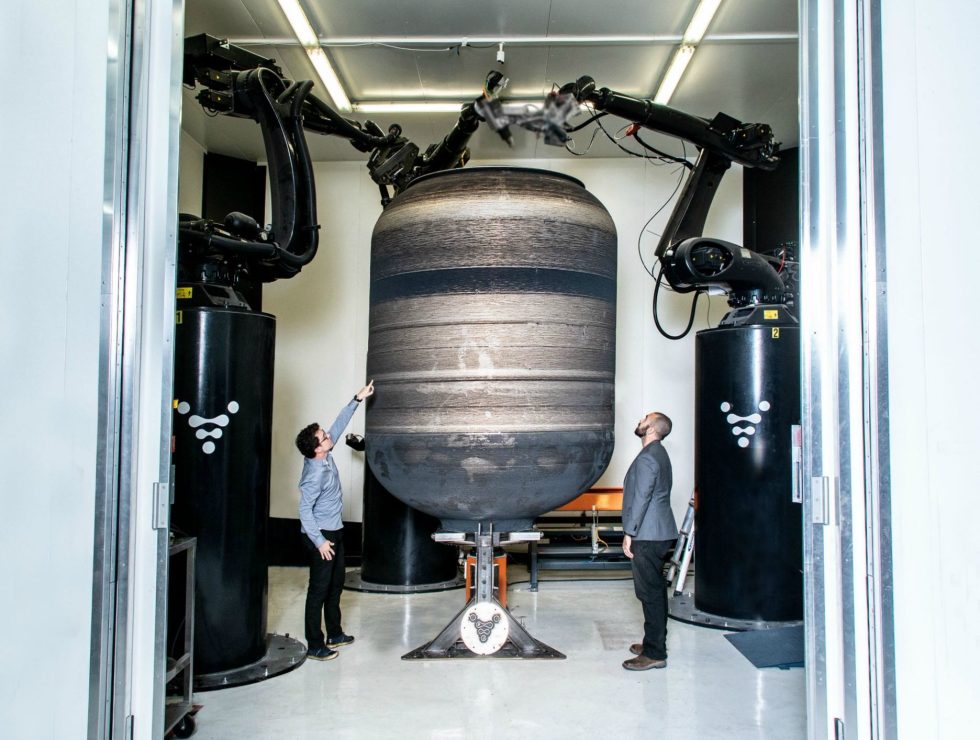-
A rendering of the Terran 1 rocket lifting off from Launch Complex 16.Relativity Space
-
A rendering of the rebuilt launch site.Relativity Space
-
Another rendering including the horizontal integration facility.Relativity Space
A company that aspires to 3D print almost the entirety of its rockets has reached an agreement with the US Air Force to launch from historic facilities at Cape Canaveral Air Force Station in Florida. Relativity Space said Thursday it has a multiyear contract to build and operate its own rocket launch facilities at Launch Complex 16.
Under terms of the competitively awarded agreement, the site will officially be a “multiuser” facility for five years. However, if Relativity meets certain milestones and begins regularly launching rockets, it will be able to convert the agreement into a 20-year exclusive right to use the launch site.
Relativity has been searching for a launch site almost since the company’s inception in 2015, said co-founder Tim Ellis. However, the formal search has taken about eight months, he said. “This was definitely our top choice, I would say by quite a bit,” he said. “We looked at every launch site in the United States.”
The partnership between Relativity and the Air Force is consistent with Relativity’s goals to both be a disruptive aerospace company, by pushing beyond existing technology in terms of additive manufacturing and automated rocket fabrication, but by working closely with the US government and its existing facilities. Already, the company has an agreement with NASA’s Stennis Space Center in Mississippi to test its engines.
“Our approach from day one has been that the government is not the enemy, they’re our friend,” Ellis said.
ICBM test site
The Air Force built Launch Complex 16 in the late 1950s for test launches of the Titan I and Titan II missiles. These tests, between 1959 and 1963, were critical to establishing the country’s fleet of intercontinental ballistic missiles during the Cold War. During the mid-1960s, the Air Force transferred the facility to NASA, which used it for some activities during the Gemini program, and then test firings of the Apollo Service Module’s main engine, which pushed the vehicle into—and out of—lunar orbit during NASA’s Moon missions.
After the Apollo program, the Air Force took control of the facility again, testing dozens of Pershing missiles in the 1970s and 1980s, before decommissioning the launch site. It has gone unused since then. The launch towers are now gone, but Ellis said the nearly 500 tons of concrete already poured on the site will probably be suitable for use. Relativity will build its own transporter-erector for its Terran rocket and horizontal integration facilities.
Amid a surge in private rocket development in the United States, this complex is one of the few major launch facilities still available at Cape Canaveral. If successful in bringing its Terran 1 rocket to the launch pad, Relativity will join a select group of SpaceX, United Launch Alliance, and Blue Origin as rocket companies with major operational orbital launch sites at the Cape.
Growing rapidly
In an interview, Ellis said that Relativity remains on track with development of the Terran 1 rocket for a 2020 test launch and commercial operations from the Cape in 2021. As engine tests continue, the company has also recently begun testing flight avionics hardware.
The company has also continued to grow from beyond its original small nucleus. In the last nine months, the number of employees at Relativity has risen from 14 to 60 people, Ellis said. That number includes 12 people who were “senior” technical leaders at other major aerospace companies. (SpaceX’s former vice president of launch operations, Tim Buzza, joined Relativity earlier this year and played a major role in the Launch Complex 16 agreement).
The Terran 1 booster will lift up to a ton to low-Earth orbit, and Relativity is targeting a mix of government and private satellite contracts to reach commercial viability. But Ellis does not see profit as an endpoint. Like SpaceX founder Elon Musk, he views the settlement of other worlds as essential to the long-term viability of the human species.
To make that a reality, Ellis said launch costs must come down dramatically, and he sees 3D-printed, highly customizable rockets as the answer to that challenge. One day, he hopes to see a rocket printed on the surface of Mars and launched back to Earth.
“At the end of the day, why we started Relativity is because this is the inevitable future,” he said of automating rocket production. “Figuring out how to automate and build rockets this way is important for the future story of humanity.”
Listing image by Relativity Space
reader comments
116